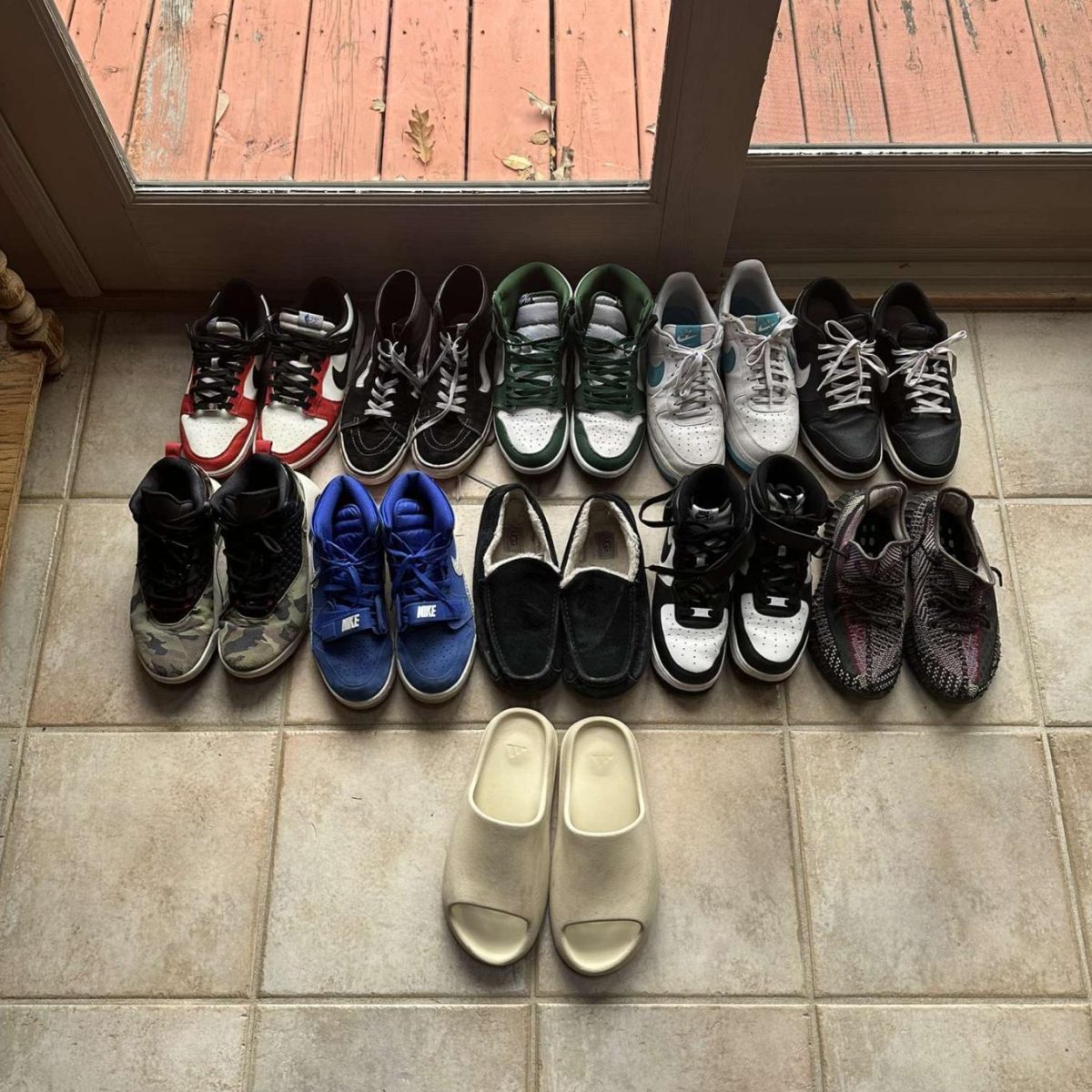From Air Jordan 1’s to Nike Dunks, shoe culture has evolved into a generational fad. The sudden craze for shoes has taken the world by storm and will for many years.
Shoe culture provides an opportunity for people to express themselves with what they wear. Whether it’s a sneaker that enhances one’s outfit, or one for everyday use, the variety of shoes is endless.
Its roots stem from a familiar area: New York. In an attempt to bring out Black culture and expression, street-style performing had become prominent. Street basketball and breakdancing were common forms of this performance style, and they connected with sneakers to convey a message. Larger companies ventured out to produce shoes that allowed their consumers to express themselves with their accessories.
With the release of the Air Jordan 1’s in the 1970’s, shoe culture was born. Consumers flocked to purchase the iconic sneakers hoping to flaunt their new ‘Jordans’. The shoe market erupted and different brands including Nike, Adidas, Air Jordan, Puma and New Balance became familiarized with the fanatics of the sneaker world.
This trend continued through the early 2000’s to present day. Top shoe companies partnered with some of pop culture and entertainment’s biggest stars. Athletes and artists signed contracts hoping to earn concentives through well-known brands, such as LeBron James and Michael Jordan to Nike, Pharell Williams with Adidas and Tom Brady to Under Armour.
Shoe culture’s evolution was significant due to the art of reselling. Reselling shoes quickly became popularized by people of all backgrounds, and its success brought attention towards the mania. Sellers buy shoes at the time of release and sell them to consumers when demand is higher.
The intention of reselling is to buy the newest or more unique shoes after they release with the intention of selling them at higher prices to make a profit. This method brought copious amounts of attention to the shoe game and created a generational fad.
At PV, the presence of shoe culture is evident. Students roam the hallways wearing a variety of shoes currently in style. Nike Dunks, Yeezy Slides and Jordan 1’s are just some of the various shoes students wear. Senior Laksh Vashisht noticed the sneaker trend at PV. “People are placed into different categories based on the shoes they wear. If a shoe is popular at the time, people will buy it to feel more relatable to the trend. The price, design or comfort are often neglected due to the popularity of the shoe,” Vashisht expressed.
The popularity of articles of clothing is a significant factor in what students purchase to create an outfit. Many people strive to fit in with whatever is in style, and sneakers become associated with that style.
One’s feelings of a shoe may be altered by another person’s opinions, as they fear disapproval for their choice. Many people often neglect their personal judgment and buy a pair of sneakers unappealing to them, because of judgment from their peers. These downsides of shoe culture can bring unnecessary judgment upon those purchasing shoes different from popular fashion trends.
Vashisht realized the opinions of his peers changed his mind on many of his shoe purchases. “I admit I’ve been subject to falling into the ‘hype’ of certain trends. Many of the shoes I’ve bought were associated with their popularity, rather than how much I actually liked the design and comfortability,” Vashisht said.
In recent times, the style and popularity of shoes has shifted slightly. Top-selling brands such as Nike and Adidas are still leading the pack, but brands like New Balance and Reebok are becoming more relevant.
Senior Owen Chiles related this change to the style when he was younger. “When I was in junior high, kids would get bullied for wearing New Balances because it wasn’t the style. Now I feel like we’ve matured and have come to appreciate different styles of shoes, like the vintage look New Balances may give off,” Chiles stated.
He also explained the change in how peers judged each other based on their shoes. “If you weren’t wearing the same brand of shoes everyone else had at the time, someone was going to call you out for it,” he continued. “Sometimes people still express judgment, but it’s not as often as it was when I was younger.”
People will go to many lengths to purchase a pair of shoes to wear, sell or display in their rooms. The effects of shoe culture on fashion have created a generational phenomenon for years to come.









